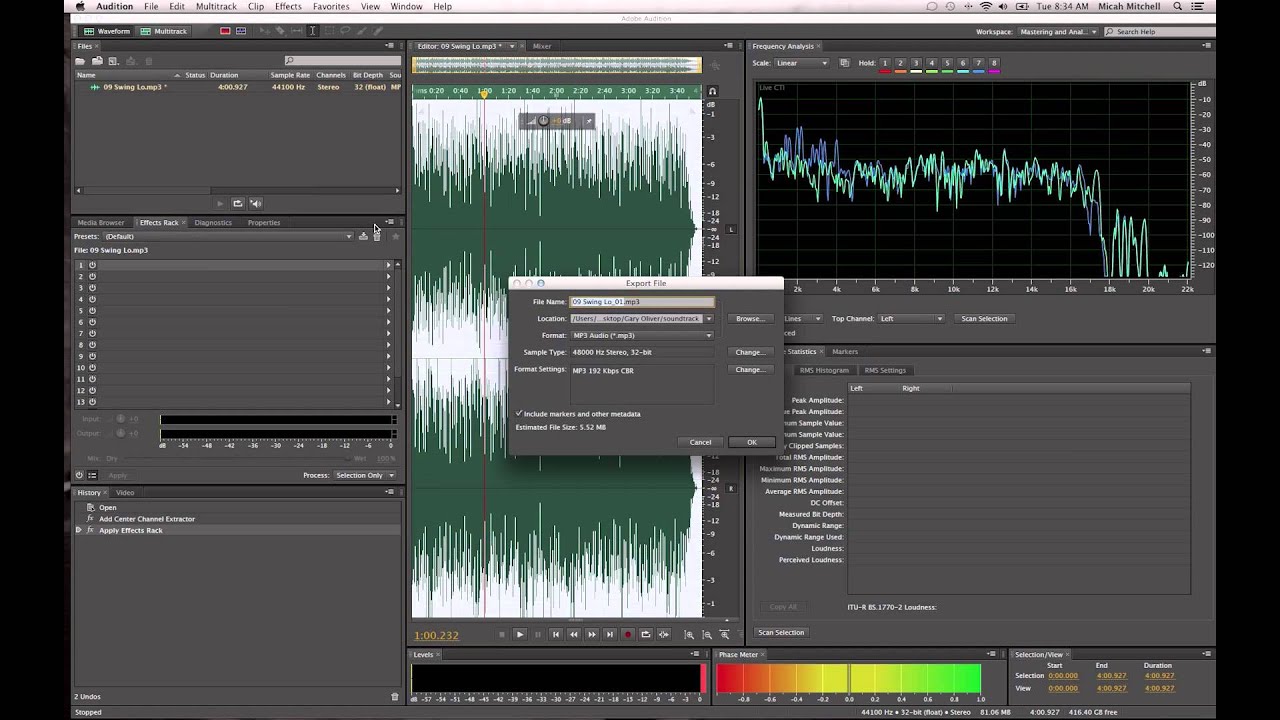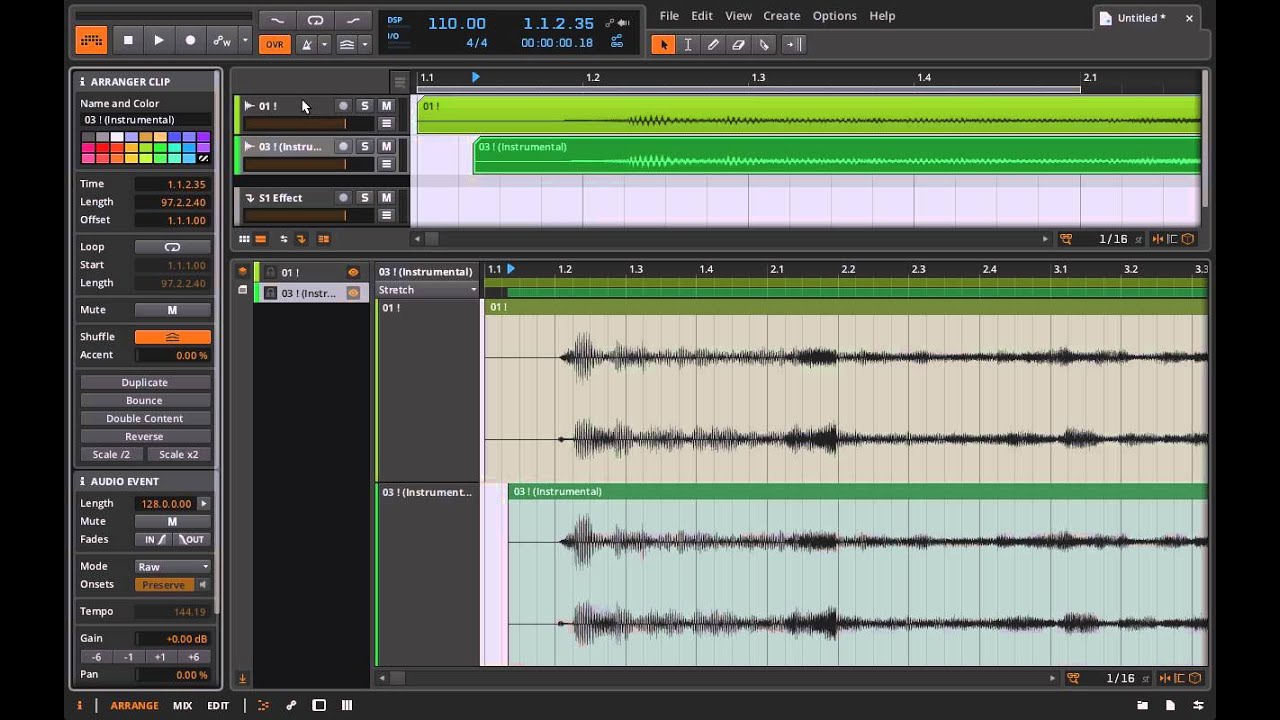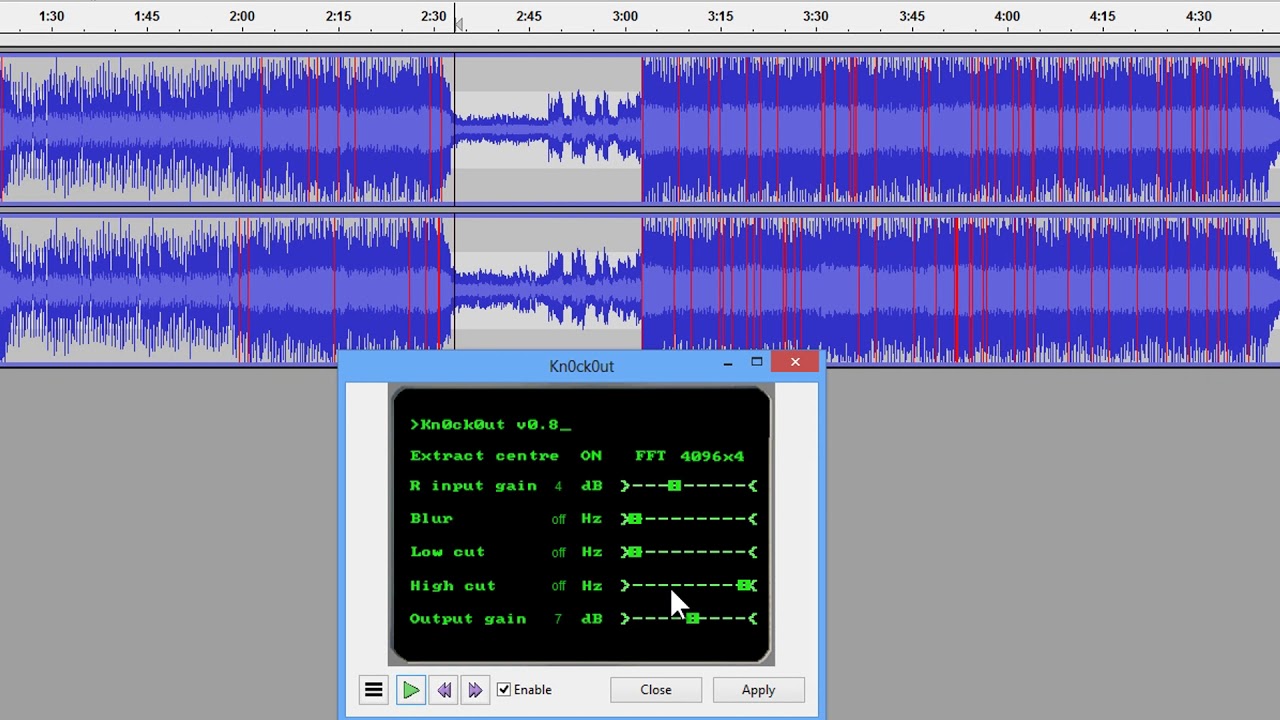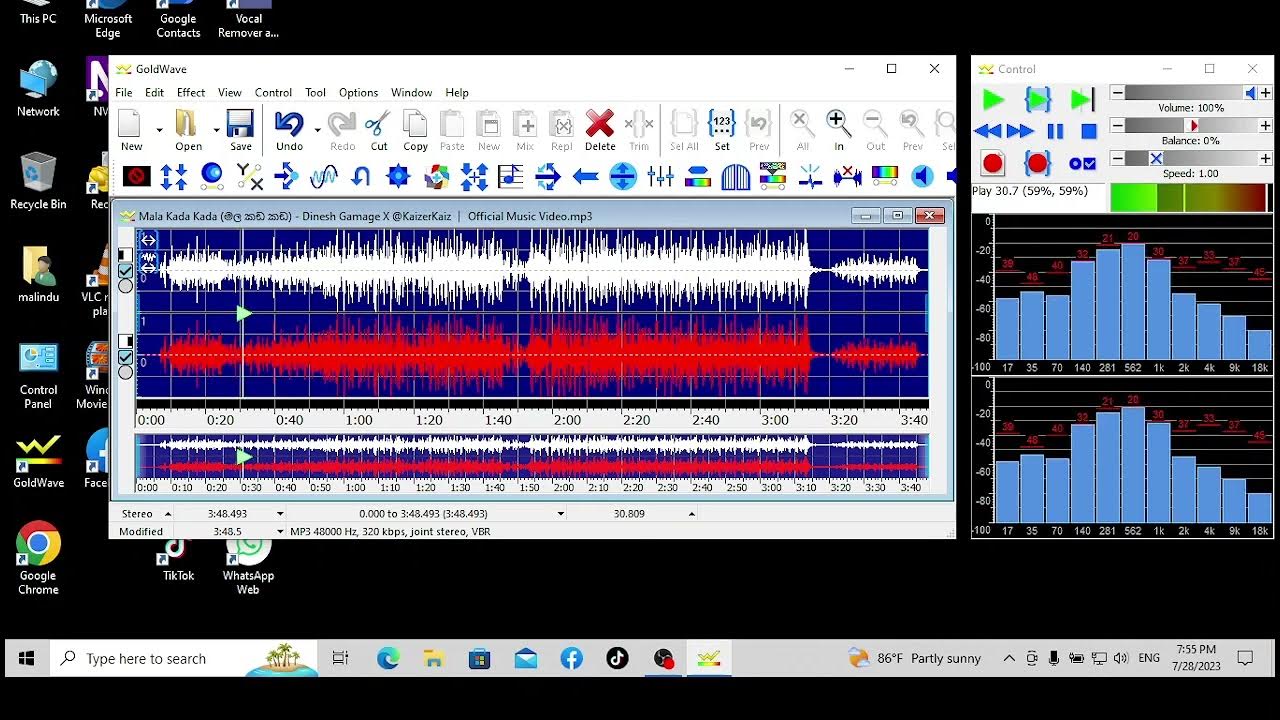Home>Events & Info>Acapella>How To Make A Remix Without Acapella
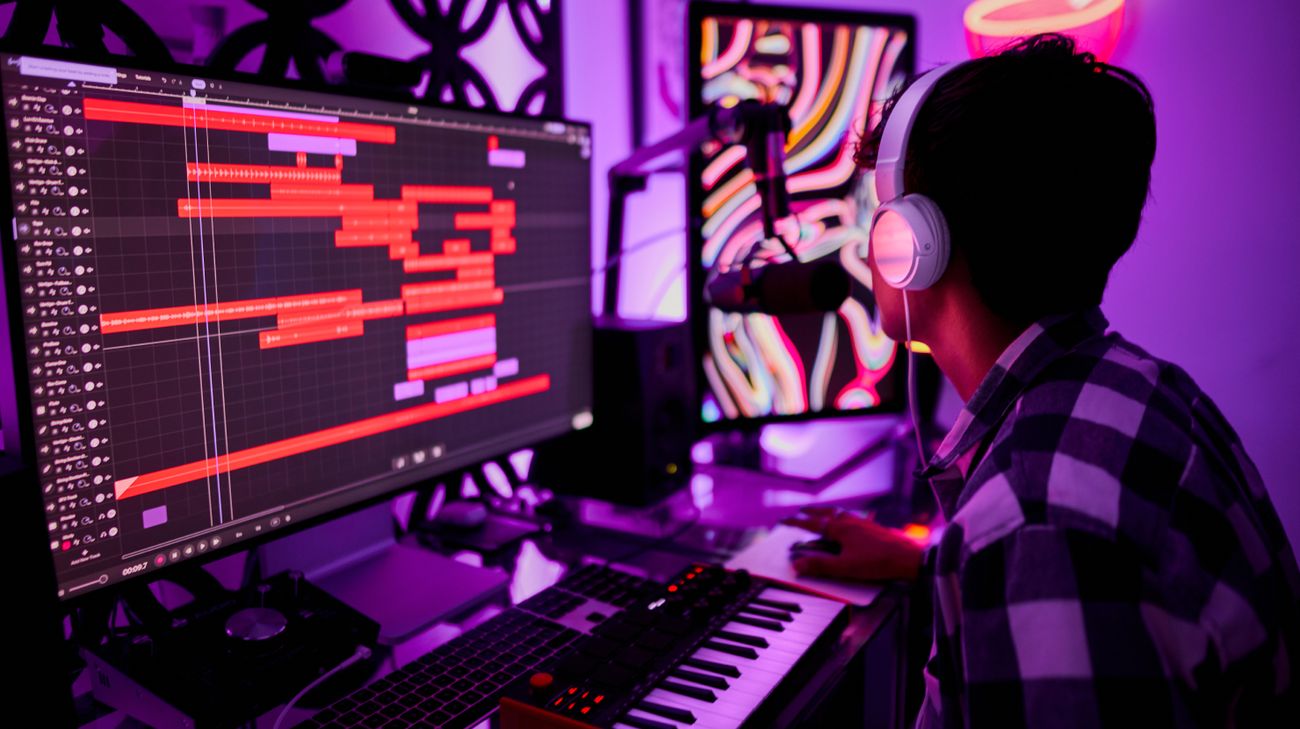

Acapella
How To Make A Remix Without Acapella
Published: January 3, 2024
Discover how to create a mesmerizing remix without an acapella. Unlock the secrets of blending sounds and beats to produce a captivating musical masterpiece.
(Many of the links in this article redirect to a specific reviewed product. Your purchase of these products through affiliate links helps to generate commission for AudioLover.com, at no extra cost. Learn more)
Table of Contents
- Introduction
- Understanding Remixing and Acapella
- Alternative Methods for Acquiring Vocals
- Isolating Vocals from the Original Track
- Using Instrumental Versions and Stems
- Utilizing DIY Techniques for Extracting Vocals
- Experimenting with Vocal Manipulation Plugins
- Applying Creative Remixing Techniques
- Conclusion
Introduction
Welcome to the world of remixing! If you’re a music enthusiast with a passion for giving songs a fresh twist, you’re in for a treat. Remixing allows you to put your creative spin on existing tracks, transforming them into something entirely new and exciting. One crucial element in remixing is obtaining the vocals, also known as the acapella, which serves as the backbone of your reimagined masterpiece.
While having access to the original acapella of a song can make the remixing process smoother, it’s not always readily available. But fear not! There are alternative methods and techniques you can employ to still create a killer remix without the official acapella.
In this article, we will explore various solutions to acquire vocals for remixing when the acapella is not readily available. We’ll dive into techniques for isolating vocals from the original track, using instrumental versions and stems, extracting vocals using DIY methods, and even exploring vocal manipulation plugins. So buckle up and get ready to take your remixing skills to the next level!
Understanding Remixing and Acapella
Before we delve into the methods of acquiring vocals for remixing, let’s first understand the concept of remixing and the significance of the acapella in the process.
Remixing is the art of reimagining and reconstructing a pre-existing song to create a new version. It involves manipulating various elements of the original track, such as the instrumentation, beats, and vocals, to produce a fresh and unique rendition. Remixes can range from subtle variations to radical departures from the original, offering listeners a new perspective on familiar tunes.
The acapella is a key component in remixing as it provides the isolated vocal track of the original song. It allows remixers to rebuild the musical elements around the vocals, creating a seamless blend of the new instrumental arrangement with the existing vocals. Having access to the acapella grants more creative freedom and control over the remixing process, enabling you to experiment with different sounds and styles.
However, obtaining the official acapella is not always an option. Many artists and record labels do not release acapellas for various reasons, including copyright restrictions or simply choosing to keep the vocals exclusive to the original version. But this should not discourage you from remixing!
There are alternative methods and techniques you can employ to acquire vocals for your remix, even when the official acapella is not readily available. In the following sections, we will explore various strategies and tools that will help you in your remixing endeavors.
Alternative Methods for Acquiring Vocals
When the official acapella is not accessible, fear not! There are alternative methods you can use to acquire vocals for your remixing project. Let’s explore some of these methods:
- Studio Acapellas: Many artists, DJs, and producers release what are known as “studio acapellas.” These are unofficial vocal-only versions of songs that are often shared for remixing purposes. A studio acapella is usually created by isolating the vocals from the original track using professional audio editing software. Websites and online communities dedicated to remixing often host a collection of studio acapellas that you can download and use in your remixes.
- DIY Vocals: If you can’t find a studio acapella of the song you want to remix, you can try creating your own vocals. This method requires some basic recording equipment, such as a microphone and audio interface, and a quiet environment to ensure clean recordings. You can sing or find a talented vocalist to record the vocals for your remix. Remember to focus on capturing high-quality audio to achieve the best results.
- Acoustic Covers: Another option is to search for acoustic covers of the original song. Many independent artists and musicians upload acoustic versions of popular songs on platforms like YouTube or SoundCloud. These covers often feature clear and isolated vocals that you can use for your remixing project. Be sure to credit the original artist and seek permission if necessary.
- Vocal Sampling: If you’re unable to find an acapella or create vocals from scratch, you can consider using vocal samples from sample packs. Sample packs are collections of professionally recorded sounds and loops, including vocal samples. These samples can provide you with a wide range of vocal phrases and hooks that you can manipulate and incorporate into your remix. Ensure that you have the necessary licensing rights to use the samples in your remix.
By exploring these alternative methods, you can still acquire vocals for your remixing projects, even without the official acapella. Remember to respect the copyrights and intellectual property of the original artists and seek proper permissions when necessary. Now that you have some vocal options, let’s move on to the techniques for isolating vocals from the original track.
Isolating Vocals from the Original Track
Isolating vocals from the original track can be a challenging task, but with the right techniques and tools, it is possible to extract the vocals and use them in your remix. Here are a few methods you can try:
- Phase Cancellation: One popular technique for isolating vocals is through phase cancellation. This method involves finding an instrumental version of the same song and aligning it with the original track. By inverting the phase of either the instrumental or the original track, you can cancel out the instruments, leaving only the vocals. This technique works best when the instrumental and the original track are similar and perfectly aligned.
- EQ and Bandpass Filtering: Another approach is using equalization (EQ) and bandpass filtering to isolate the vocals. This technique involves boosting the frequencies where the vocals typically reside and attenuating the rest. By experimenting with different EQ settings and filters, you can emphasize the vocal frequencies and reduce the presence of other instruments. However, this method may not provide a completely clean vocal separation and may require additional processing to achieve satisfactory results.
- Source Separation Software: There are now advanced audio source separation software available that can help isolate vocals from a mixed track. These software programs utilize sophisticated algorithms and machine learning techniques to separate the vocals from the background music. Although not always perfect, they can significantly enhance the isolation process and provide a cleaner vocal track for your remixing purposes.
It’s important to note that isolating vocals from a mixed track is a complex process and may not always result in perfect results. The success of the isolation depends on various factors, such as the quality of the original recording and the mixing techniques used. However, by experimenting with different methods and tools, you can significantly improve the extraction process and obtain usable vocal tracks for your remix.
Remember to always respect the original artist’s work and seek appropriate permissions if you plan to use the isolated vocals in your remix. Now that we’ve looked at isolating vocals, let’s explore another method for acquiring vocals for your remix: using instrumental versions and stems.
Using Instrumental Versions and Stems
When you can’t find or isolate the vocals from the original track, using instrumental versions and stems can be a valuable alternative for acquiring vocals for your remix. Here’s how you can make use of these resources:
Instrumental Versions: Many songs, especially those released as singles, have accompanying instrumental versions. These versions remove the vocals, leaving only the instrumental elements of the track. Instrumental versions are often used for live performances, karaoke, or remixing purposes. They provide a clean canvas for remixers to add their own creative elements while still maintaining the integrity of the original song. You can often find instrumental versions of popular songs on music platforms, remix communities, or by contacting the artist or record label directly.
Stems: Stem files contain individual tracks or elements of a song, such as vocals, drums, bass, and instruments, all separated into their own audio channels. These files are often used for remixing and provide remixers with greater flexibility and control over the individual elements of a track. While stems may not always include the isolated vocal track, they allow you to mute or manipulate the other elements, creating the perception of vocal isolation. Stem files can be obtained through remix competitions, collaborations with artists or producers, or by purchasing them from online platforms that offer stem packages.
When working with instrumental versions or stems, it’s important to listen carefully to identify any artifacts or residual vocals that may still be present. Sometimes, remnants of the vocals can still be audible, especially in stems that are not specifically labeled as “acapella” or “vocal only.” In such cases, additional processing and creative techniques may be needed to further isolate or manipulate the vocals to fit your remix.
Remember to acknowledge and credit the original artists, producers, and owners of the instrumental versions and stems used in your remix. Clear communication and permissions are essential to ensure you are respecting the rights of the original creators.
Now that we have explored the use of instrumental versions and stems, let’s move on to DIY techniques for extracting vocals from the original track.
Utilizing DIY Techniques for Extracting Vocals
When you can’t find an acapella or instrumental version of the song you want to remix, you can try utilizing DIY techniques to extract vocals from the original track. These methods may not always provide perfect results, but they can still be effective for achieving usable vocals. Here are a few DIY techniques you can experiment with:
- Manual Vocal Editing: In this method, you can manually edit the original track using a digital audio workstation (DAW). By carefully listening to the song and identifying sections with minimal instrumentation, you can try to isolate and extract the vocals. Use the audio editing tools in your DAW to cut, mute, or attenuate the music elements surrounding the vocals. It may require precise and detailed editing, as well as additional processing to achieve a cleaner vocal extraction.
- Phase Reverse Technique: A simple yet effective technique is using phase reverse. By splitting the original track into two duplicate copies, you can reverse the phase of one copy and play both copies simultaneously. Since the vocals tend to be panned center in most songs, the music elements will cancel out, while the vocals will remain audible. This method works best when the instrumental elements are significantly different on the left and right channels.
- Frequency Notching: Another DIY technique involves using frequency notching. By applying a narrow EQ notch or cut around the instrumental frequencies, you can reduce the volume of the music elements, emphasizing the vocals. Experiment with different EQ settings and frequencies to find the sweet spot for minimizing the instrumental presence without completely removing the vocals.
- Audio Phasing: Audio phasing is a technique where you layer the original track with an instrumental version that you’ve aligned and mirrored. By slightly shifting one of the tracks, you can create phase cancellations, attenuating the music elements and boosting the vocal presence. This method requires careful adjustment and experimentation to achieve the desired vocal extraction.
Keep in mind that DIY techniques for vocal extraction may require a significant amount of trial and error. The success of these methods greatly depends on the complexity of the original track and the mixing techniques used. It’s important to be patient and persistent, refining your approach until you achieve satisfactory results.
Remember to respect the copyright and intellectual property rights of the original artists when utilizing DIY vocal extraction techniques. Seek appropriate permissions and credits for any use of the extracted vocals in your remix.
Next, let’s explore the world of vocal manipulation plugins and how they can be used in remixing.
Experimenting with Vocal Manipulation Plugins
When it comes to remixing and working with vocals, vocal manipulation plugins can be powerful tools in your arsenal. These plugins offer a wide range of effects and processing options that allow you to creatively alter and manipulate the vocals for your remix. Here’s how you can make the most of vocal manipulation plugins:
Pitch Shifting and Time Stretching: Vocal manipulation plugins often include pitch shifting and time stretching capabilities. These features allow you to change the pitch of the vocals, making them higher or lower, and adjust the timing to match the tempo of your remix. Pitch shifting and time stretching can help you fit the vocals seamlessly into your new instrumental arrangement.
Harmonization and Chorus Effects: Vocal manipulation plugins also offer harmonization and chorus effects, which add depth and richness to the vocals. By introducing harmonies or doubling the vocals, you can create a fuller and more dynamic sound. These effects can enhance the impact of the vocals in your remix and give them a unique character.
Vocal Effects and Processing: Explore the various vocal effects and processing options available in these plugins, such as reverb, delay, distortion, and modulation. These effects can add texture, dimension, and personality to the vocals, helping them stand out in your remix. Experiment with different combinations and settings to find the perfect balance that suits your remix’s vision.
Formant Shifting and Vocal Transformations: Some vocal manipulation plugins offer formant shifting and vocal transformation capabilities. Formant shifting allows you to change the vocal’s resonance and timbre, creating unique and unconventional textures. Vocal transformations can take the vocals to a whole new level by altering them into robotic, alien, or otherworldly sounds. These features can add an element of surprise and innovation to your remix.
Real-Time Manipulation and Automation: Many vocal manipulation plugins allow for real-time manipulation and automation. This means you can adjust the parameters and effects while the remix is playing to create dynamic and expressive vocal transformations. Automating certain effects, such as volume or filter sweeps, can add movement and excitement to the vocals, breathing life into your remix.
By exploring and experimenting with different vocal manipulation plugins, you can push the boundaries of creativity in your remix. Remember to use these tools tastefully and in line with your remix’s vision. Don’t be afraid to take risks and try unconventional approaches to make your remix truly unique and captivating.
Before we wrap up, let’s summarize the key points we’ve discussed in this article.
Applying Creative Remixing Techniques
When it comes to remixing, applying creative techniques can elevate your remix to new heights. This final section will explore some creative remixing techniques that you can incorporate into your projects:
Genre Fusion: Experiment with blending different genres in your remix. By infusing elements from various musical styles, you can create a unique and innovative sound. Try combining electronic elements with acoustic instruments, or incorporating elements from completely different genres to surprise and captivate listeners.
Sample Manipulation: Don’t limit yourself to just using vocals as your main focus. Consider sampling other elements from the original track, such as drum loops, instrument riffs, or sound effects. Manipulate and transform these samples to create new textures and rhythmic patterns that add depth and interest to your remix.
Structural Reimagining: Break away from the original song’s structure and experiment with different arrangements and song sections. Add new intros, build-ups, breakdowns, or even change the song’s key. By reimagining the structure, you can create a fresh and exciting journey for your listeners.
Creative Effects and Processing: Explore unique audio effects and processing techniques to add a distinct flavor to your remix. Use filters, modulation, granular synthesis, and glitch effects to create interesting textures and intricate soundscapes. Be bold, and let your creativity guide you in finding new and unconventional ways to shape the sound of your remix.
Remixing with a Twist: Instead of simply rearranging or adding new elements to the original track, consider giving your remix a unique twist. Reinterpret the melodies, change the time signature, or experiment with unconventional song structures. By adding your own artistic vision and interpretation, you can create a remix that is truly distinct and memorable.
Collaborations and Mashups: Collaborating with other artists and producers can bring fresh ideas and perspectives to your remix. Consider reaching out to vocalists, instrumentalists, or fellow remixers to create exciting collaborations or mashups. The combination of different talents and styles can lead to remarkable and innovative remixes.
Remember, the essence of remixing lies in pushing boundaries and putting your personal stamp on a song. Don’t be afraid to take risks, think outside the box, and let your creativity guide you in creating a remix that is truly unique and compelling.
Now that you have a toolbox of remixing techniques, it’s time to dive in and start experimenting. Embrace your creativity, let the music guide you, and enjoy the process of crafting your own remarkable remixes.
I hope this article has provided you with valuable insights and inspiration for your remixing journey. Happy remixing!
Validate HTML
Conclusion
Remixing is an exciting and creative process that allows you to put your own unique spin on existing songs. While having access to the official acapella can make remixing easier, there are alternative methods and techniques you can employ to acquire vocals for your remix when the acapella is not readily available. Whether it’s through using instrumental versions and stems, exploring DIY vocal extraction techniques, or experimenting with vocal manipulation plugins, there are plenty of options for you to explore.
Throughout this article, we’ve discussed various methods for acquiring vocals, including utilizing studio acapellas, creating your own DIY acapellas, seeking out acoustic covers, or sampling vocal phrases from sample packs. We’ve also explored techniques for isolating vocals from the original track using phase cancellation, EQ and bandpass filtering, and advanced audio source separation software.
Additionally, we’ve covered the use of instrumental versions and stems, where you can find vocals already separated from the original track. We’ve also touched on the power of vocal manipulation plugins, which allow you to pitch-shift, time-stretch, add harmonies, and apply various effects and processing to the vocals in your remix.
To truly elevate your remix, don’t be afraid to apply creative remixing techniques such as genre fusion, sample manipulation, structural reimagining, creative effects and processing, and remixing with a twist. Collaborations and mashups can also provide fresh perspectives and innovative ideas.
Remember, the key to successful and captivating remixes lies in embracing your creativity, experimenting with different methods, and allowing your personal style to shine through. Respect the rights of the original artists and seek appropriate permissions when working with their material.
Now armed with a variety of techniques and tools, it’s time to embark on your remixing journey. Whether you’re a seasoned pro or just starting out, the world of remixing holds endless possibilities for you to explore and express your musical vision. So go ahead, let the beats drop, the vocals soar, and your creativity shine as you create remixes that will captivate the ears and hearts of listeners around the world.
Validate HTML

